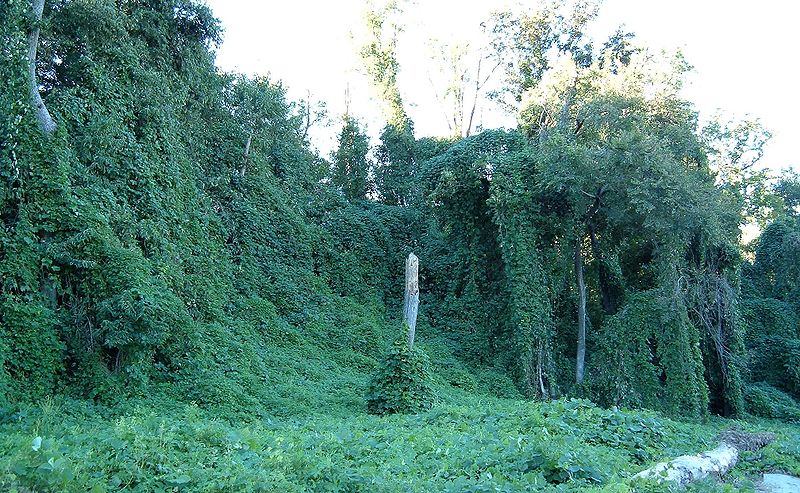
This earlier post described how this spring the sycamores were able to produce only a smattering of a few small leaves, which then promptly shriveled up. Now, other trees are beginning the same process - not as uniformly as a species...but individual specimens, maples and oaks particularly. This example is a flowering pear.


The leaves resemble honey locust, so perhaps it is another variety. The flowers are pretty and smelled so sweet! It's really sad it toppled over. Several studies have shown that ozone can cause severe root injury well before damage is visible in the foliage.


Another huge tree came down here a few months ago, but I didn't get a picture of it. The stump is behind the large hickory in the foreground, which of course, has very few leaves.


Whether that will occur before or after people notice that we have reached a critical, intolerable level of ozone in the atmosphere remains to be seen. There is virtually no foliage anyplace that isn't abnormal this season, and it's early yet. The azalea leaves are lumpy, and strangely colored.


This is what swiss chard is doing already! Glossy green leaves turning into ghoulish webs of dead brown tissue.


Even the peas just up have a weird texture, with veins that are overly prominent - a classic symptom of exposure to ozone.


This morning I read a report with a certain degree of skepticism: Invasive Kudzu is Major Factor in Surface Ozone Pollution. Seriously? If that's true, I guess my question would then be, where the hell is all the nitrogen in the air coming from that the isoprene and nitric oxide are reacting with?
"Kudzu, a leafy vine native to Japan and southeastern China, produces the chemicals isoprene and nitric oxide, which, when combined with nitrogen in the air, form ozone, an air pollutant that causes significant health problems for humans. Ozone also hinders the growth of many kinds of plants, including crop vegetation."










Chemistry's not my strong suit, but air is like 80 percent molecular nitrogen (N2). How that reacts with isoprene, I dunno.
ReplyDeleteHere's another slightly different version about what the study says:
ReplyDeletehttp://www.newswise.com/articles/view/564591/?sc=rssn
It's all rather turgid. Someday somebody will sort it all out.
In such cases, it's always good to go to the original paper: http://www.pnas.org/content/early/2010/05/12/0912279107.full.pdf
ReplyDelete“In the case of kudzu, you have a plant that is generating NOx from the soil and emitting VOCs from its leaves — it’s like a living tailpipe."
I don't know why Jim's next comment isn't visible, (THANKS Blogspot!) so here it is copied:
ReplyDeleteIn such cases, it's always good to go to the original paper: http://www.pnas.org/content/early/2010/05/12/0912279107.full.pdf
“In the case of kudzu, you have a plant that is generating NOx from the soil and emitting VOCs from its leaves — it’s like a living tailpipe."
oh, NOW it appears!
ReplyDeleteAgreed, Jim. Interpretations vary.
varcevanje za otroka [url=http://www.medvesekpusnik.info]medvesek pusnik[/url]
ReplyDelete